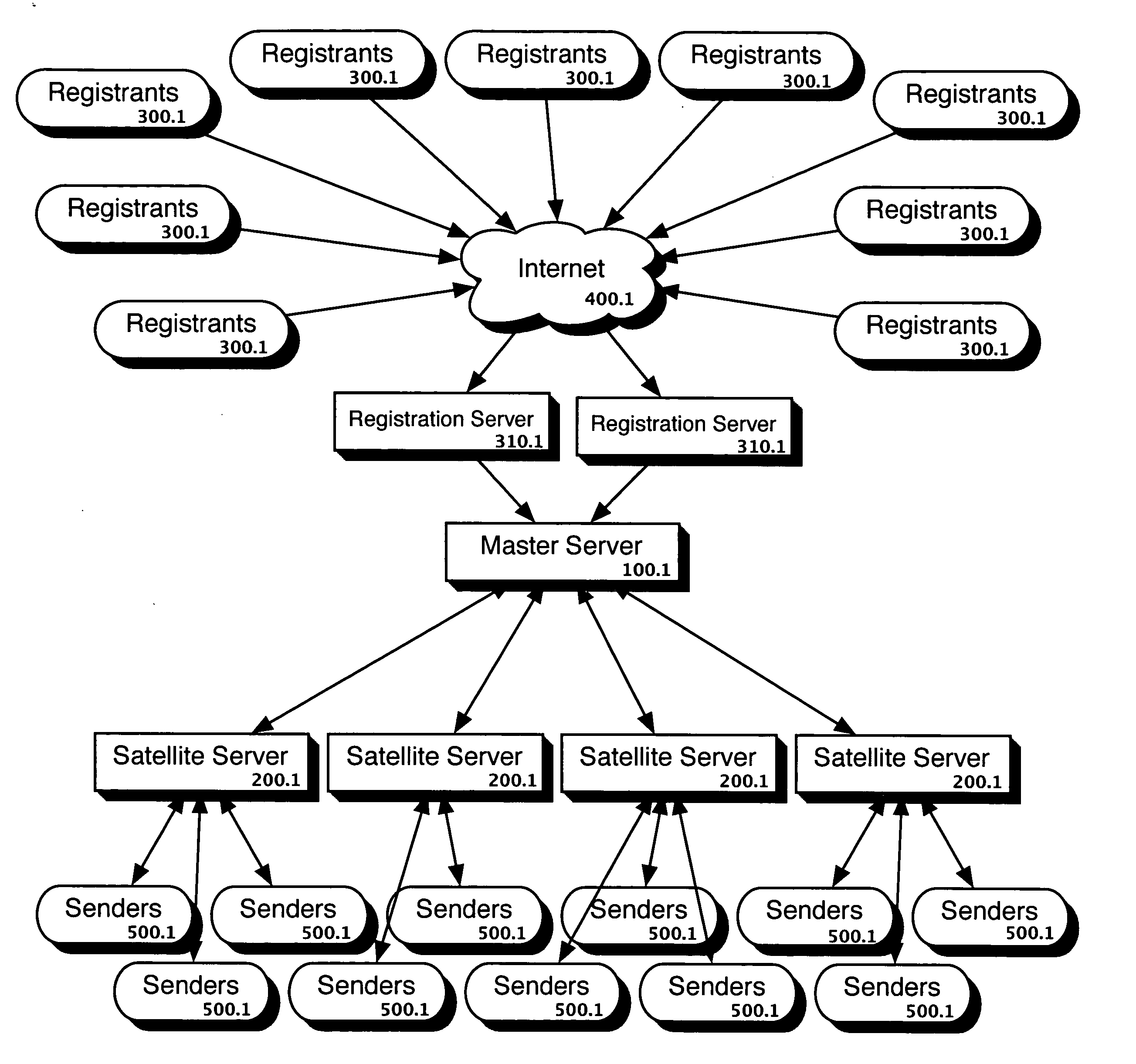Method and system for a reliable distributed category-specific do-not-contact list
- Summary
- Abstract
- Description
- Claims
- Application Information
AI Technical Summary
Benefits of technology
Problems solved by technology
Method used
Image
Examples
Embodiment Construction
[0036] In the following description, numerous specific details and implementations are set forth to provide a thorough understanding of the invention. However, it is understood that the invention may be practiced without the specific details of some of the implementations and embodiments. In other instances, well-known and understood circuit, structures, processes, and techniques have not been described in detail so as not to obscure the invention.
Overview
[0037] A method and apparatus for creating, implementing, and administering a distributed, category-specific do-not-contact list system is described. A do-not-contact list system implemented in this way allows registrants to express their preference not to receive certain kinds of messages at their contact points. The categories that can be registered with the system are variable, can be adapted over time to reflect registrants' preferences, and may include any particular characterization of messages, e.g., those advertising por...
PUM
 Login to View More
Login to View More Abstract
Description
Claims
Application Information
 Login to View More
Login to View More - R&D
- Intellectual Property
- Life Sciences
- Materials
- Tech Scout
- Unparalleled Data Quality
- Higher Quality Content
- 60% Fewer Hallucinations
Browse by: Latest US Patents, China's latest patents, Technical Efficacy Thesaurus, Application Domain, Technology Topic, Popular Technical Reports.
© 2025 PatSnap. All rights reserved.Legal|Privacy policy|Modern Slavery Act Transparency Statement|Sitemap|About US| Contact US: help@patsnap.com



